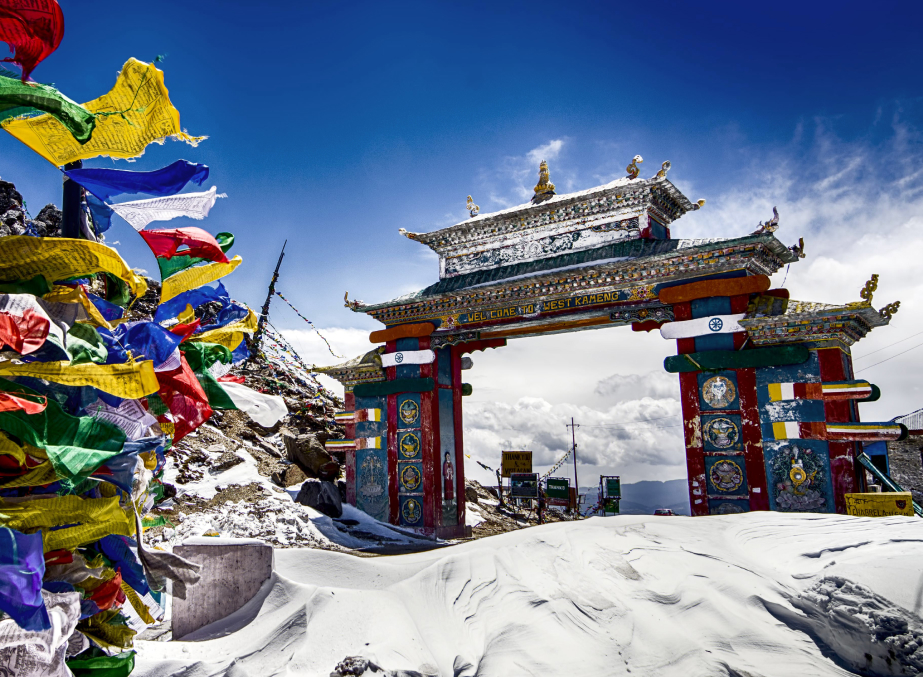
Arunachal Pradesh, often referred to as the “Land of the Rising Sun,” is the northeasternmost state of India, known for its picturesque landscapes, rich biodiversity, and diverse cultural heritage. Located in the eastern Himalayas, it shares international borders with China to the north, Myanmar to the east, and Bhutan to the west. It is the largest state in the northeastern region of India in terms of area and is one of the least populous states in the country.
Arunachal Pradesh’s name is derived from two words: “Arun,” which means “sun” in Sanskrit, and “Achal,” meaning “mountain.” This reflects the region’s natural beauty and the significance of the sun rising from the eastern part of India. The state’s capital is Itanagar, and it is divided into 25 districts. Arunachal Pradesh is also home to many indigenous communities, including the Apatanis, Nyishis, Adis, and Mishmis, each of whom has its unique traditions, languages, and customs.
Historical Facts of Arunachal Pradesh
Ancient History: The history of Arunachal Pradesh dates back to ancient times. It has been a region inhabited by various indigenous tribes who have lived there for centuries, practicing unique forms of agriculture, religion, and governance. The region was part of the greater cultural and political landscape of ancient India, although it was relatively isolated from mainstream civilization due to its rugged terrain.
Influence of Ancient Kingdoms: Arunachal Pradesh came under the influence of several ancient Indian dynasties and kingdoms. In the early centuries, the region was influenced by the Mauryas and Guptas, and the area may have been part of the kingdoms of Assam and Bengal at different points in time.
Medieval Period: During the medieval period, Arunachal Pradesh was primarily inhabited by various indigenous tribes that maintained their independence. While there is limited written history, the region was in contact with neighboring states such as Assam, Bhutan, and Tibet. Trade routes passed through the region, which led to a blend of cultures and practices from different parts of Asia.
British Era (1826–1947): In the early 19th century, during British colonial rule, Arunachal Pradesh was considered part of the larger Assam region. The British recognized the region’s strategic importance due to its location near the Himalayan passes and its proximity to Tibet. However, the region was largely left untouched and remained under the administration of the British-appointed agents, who mainly focused on controlling border areas.
The British demarcated the borders through the “McMahon Line” in 1914, which divided Tibet from British India. This line is central to the ongoing territorial disputes between India and China, as China does not recognize the McMahon Line as the official boundary.
Post-Independence Period: After India gained independence in 1947, Arunachal Pradesh was initially part of Assam. The state became a Union Territory in 1972 and was later granted full statehood on February 20, 1987. This move gave Arunachal Pradesh greater autonomy and allowed it to have its own legislative assembly.
- Territorial Disputes: The region has been at the center of territorial disputes, particularly with China. China claims parts of Arunachal Pradesh as its territory, calling it “South Tibet.” The border dispute became a major issue after the 1962 Sino-Indian War, which resulted in a brief military conflict between India and China. Despite the tensions, Arunachal Pradesh remains an integral part of India.
- Cultural Diversity: The state is known for its rich and diverse cultural heritage. Its indigenous tribes speak over 50 different languages and dialects. Major festivals like Losar (the New Year festival), Solung, and Nyokum are celebrated with great enthusiasm. The state has also been recognized for its artistic traditions, including the creation of intricate textiles, handicrafts, and music.
.
Geography
Arunachal Pradesh spans across the eastern Himalayas, with lush valleys, high mountains, dense forests, and numerous rivers that contribute to the state’s biodiversity. It has some of the highest peaks in India, including Kangto and Nyegi Kangsang. The state is also home to rich wildlife, including the rare red panda, snow leopard, and several species of birds and amphibians.
The state is divided into four broad geographical regions:
- Tawang Plateau: The western part of Arunachal Pradesh is dominated by the Tawang Plateau, home to the Tawang Monastery, which is one of the largest Buddhist monasteries in India. This region is also strategically important due to its proximity to the border with China.
- Western Arunachal: Known for its beautiful hills and valleys, the region is characterized by the presence of various tribal communities.
- Central Arunachal: This area, including the state capital Itanagar, is known for its subtropical climate and the presence of rivers like the Brahmaputra.
- Eastern Arunachal: This region borders Myanmar and is covered with thick forests, home to several indigenous tribes. The area is rich in biodiversity.
Economy
Arunachal Pradesh is an agrarian economy, with agriculture being the primary source of livelihood for the majority of the population. Rice, maize, millet, and wheat are some of the major crops grown in the state. The region also has a significant amount of untapped natural resources, including minerals, forests, and hydropower potential, which could drive its economic growth in the future.
Arunachal Pradesh is a land of natural beauty, cultural richness, and historical significance. Its strategic location and diverse communities make it an important part of India’s northeastern frontier. Although it faces challenges like underdevelopment, territorial disputes, and infrastructural hurdles, it remains a vital part of India’s identity. The state has immense potential in tourism, hydropower generation, and agricultural growth, which, if harnessed, could significantly boost its economy.
INDIAINNINGS
Campaigns
- Diwali Special
- Independence Day Celebrations
- Holiday on Holi day
- New Year Specials
Help
- Order Tracking
- Terms & Conditions
- Privacy Policy
- Tutorials
- FAQ
Help
- Facebook Chat
- Whatsapp Help
- E-mail Support
- Contact



